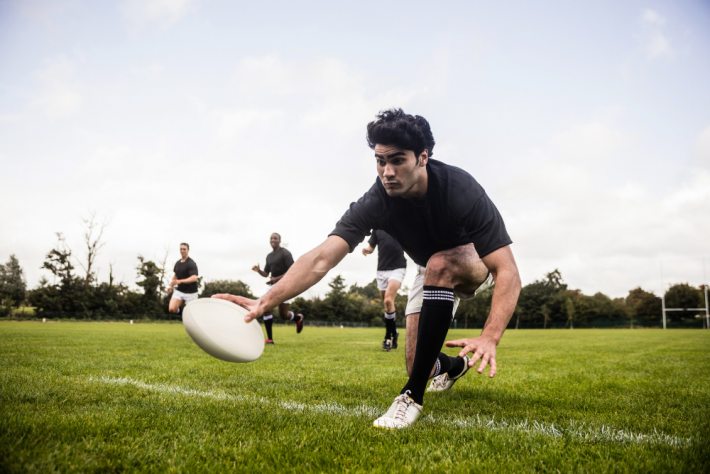
As a high contact sport with tackling as the main defensive feature, many injuries can occur during a game of rugby. In fact, rugby injury rates are reported to be nearly three times higher than soccer. These too can be tackled, though, with the right physiotherapy treatment.
What are the most common rugby injuries in Australia and how can physiotherapy treatment help? Let’s find out.
What are the most common rugby injuries?
Whether it be during training practice or a game, there are many different types of injuries that can be sustained in a game of rugby. We take a look at the most common ones here:
Overuse Injuries
Rugby involves a great deal of running, which makes overuse injuries such as tendinitis in the knee or ankle, medial tibial stress syndrome (shin splints) and bursitis highly common.
Although these types of injuries are not considered serious, they can affect performance and lead to more serious conditions if not treated effectively by a physiotherapy professional.
Traumatic Injuries
The mention of more serious conditions, brings us to traumatic injuries which are common in rugby, due to the fact that it’s a collision sport.
Such injuries range from fractured bones, dislocated fingers and elbows, sprained ligaments, deep muscle bruises, strained tendons, facial fractures, knee and shoulder injuries.
Concussions
Just like other sports involving contact and speed, concussions happen on the rugby field.
How do you know if you have a concussion? Apart from receiving a hard hit to the head, you may experience loss of consciousness, headaches, blurred vision, dizziness and confusion, as the main symptoms to look out for.
A player should cease playing and be assessed by a qualified medical professional as soon as possible after receiving a hard hit to the head (even if they aren’t experiencing all those symptoms).
Medial collateral ligament sprains
The medial collateral ligament stabilises the inside of the knee. In rugby, this ligament is often sprained or torn as the result of a direct force to the outside of the knee, forcing it to stretch the inside of the joint (such as being tackled sideways).
Meniscus tears
Another serious related knee injury is a tear of the meniscus. The meniscus is essentially the knee’s shock absorber and is responsible for stress reduction.
Tearing of the meniscus can occur from contact forces or from rotational forces during a quick change of direction.
How can physiotherapy help treat rugby injuries?
Physiotherapists specialising in sports physiotherapy will diagnose and treat the injuries at hand. Depending on the injury, treatment techniques will range from:
– Massage
– Manipulation
– Mobilisation
– Exercise Prescription
Along with treating sports injuries, a vital role of physiotherapists is to develop individualised prevention plans to get you back playing rugby or your chosen sport at your full potential.
This treatment approach should provide each patient with a personalised plan for recovery, including rehabilitation to recover strength, fitness and conditioning, and sport specific skills to assist injury recurrence and prevention strategies.
At Morley Physiotherapy, our team have a wealth of experience in diagnosing, treating, and managing sports-related injuries arising from a wide range of sport disciplines including rugby. We recognise that sport injuries vary from person to person and from sport to sport, ranging from social, amateur and elite/professional levels of participation.
If you are suffering from a sporting injury that is stopping you from performing your best, book a consultation with one of our highly qualified physiotherapists at Morley Physiotherapy Centre, near Noranda today. We can get you back on the field fast with confidence.
